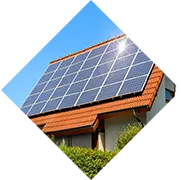Theoretical Efficiency of Solar Panels - Understanding Solar Energy Optimization
Theoretical Efficiency of Solar Panels An Overview
Solar panels have emerged as an integral component in the quest for renewable energy sources. As the world grapples with climate change and the depletion of fossil fuels, solar energy offers a sustainable and clean alternative. At the heart of solar technology lies an important metric the theoretical efficiency of solar panels. Understanding this concept is crucial for advancing solar energy technologies and maximizing their potential.
The theoretical efficiency of a solar panel refers to the maximum percentage of solar energy that can be converted into usable electricity under ideal conditions. This metric is influenced primarily by the properties of the solar cells used and the physical laws governing energy conversion. The most common type of solar cell, the silicon solar cell, has a theoretical efficiency limit determined by the Shockley-Queisser limit, which suggests that under the standard solar spectrum, the maximum efficiency for a single-junction silicon solar cell is around 33.7%.
However, achieving such efficiency in real-world applications is challenging. Factors such as temperature, angle of sunlight, shading, and soiling of the panels can significantly reduce the effective output. While high-quality solar panels can achieve efficiencies upwards of 20% in practical scenarios, many commercially available products have efficiencies ranging from 15% to 22%.
Researchers are continuously exploring ways to push the boundaries of solar panel efficiency. One promising avenue is the development of multi-junction solar cells, which incorporate multiple layers of materials, each optimized to absorb different wavelengths of light. By stacking these layers, multi-junction cells can potentially achieve efficiencies exceeding 40%, capturing a broader spectrum of sunlight.
solar panel theoretical efficiency

Another innovative approach is the use of concentrator photovoltaics (CPV), which focuses sunlight through lenses or mirrors onto small, highly efficient solar cells
. This technique drastically reduces the amount of expensive solar cell material required while still achieving high energy conversion rates.Moreover, advances in materials science have led to the exploration of new photovoltaic materials such as perovskites. These materials have shown promise in terms of higher efficiencies and lower production costs, with laboratory tests reporting efficiency rates exceeding 25% under controlled conditions.
In addition to improving efficiency, enhancing the longevity and stability of solar panels is equally crucial. As the demand for solar energy grows, so does the need for reliable technology that can withstand environmental stresses over time.
To conclude, while the theoretical efficiency of solar panels presents an exciting benchmark, the path to achieving and surpassing it involves ongoing research, technological innovation, and practical deployment strategies. As we continue to refine solar technology, we move closer to harnessing the full potential of the sun, ultimately contributing to a more sustainable energy future.
-
Understanding the Advantages of Solar String Inverters for Your Energy SystemNewsApr.29,2025
-
Choosing the Right PV Inverter: A Comprehensive GuideNewsApr.29,2025
-
The Future of Solar Power: Exploring Bifacial Solar PanelsNewsApr.29,2025
-
The Complete Guide to Solar Panels: Efficiency, Cost, And InstallationNewsApr.29,2025
-
The Best Options for Efficiency and Cost-EffectivenessNewsApr.29,2025
-
Harnessing the Power of Off-Grid Solar Inverters for Energy IndependenceNewsApr.29,2025







